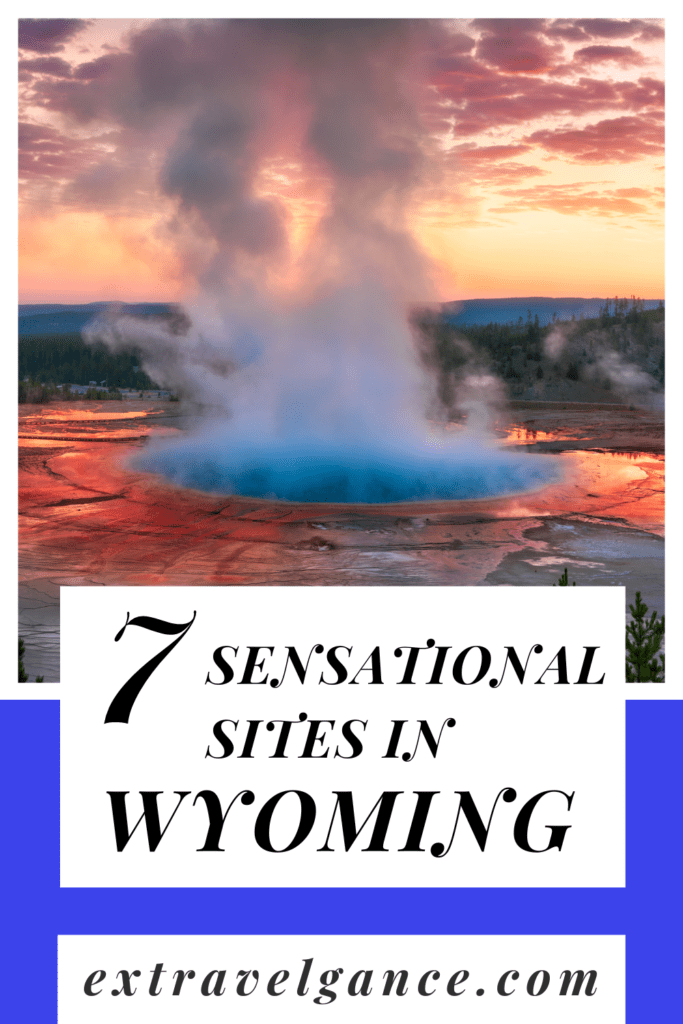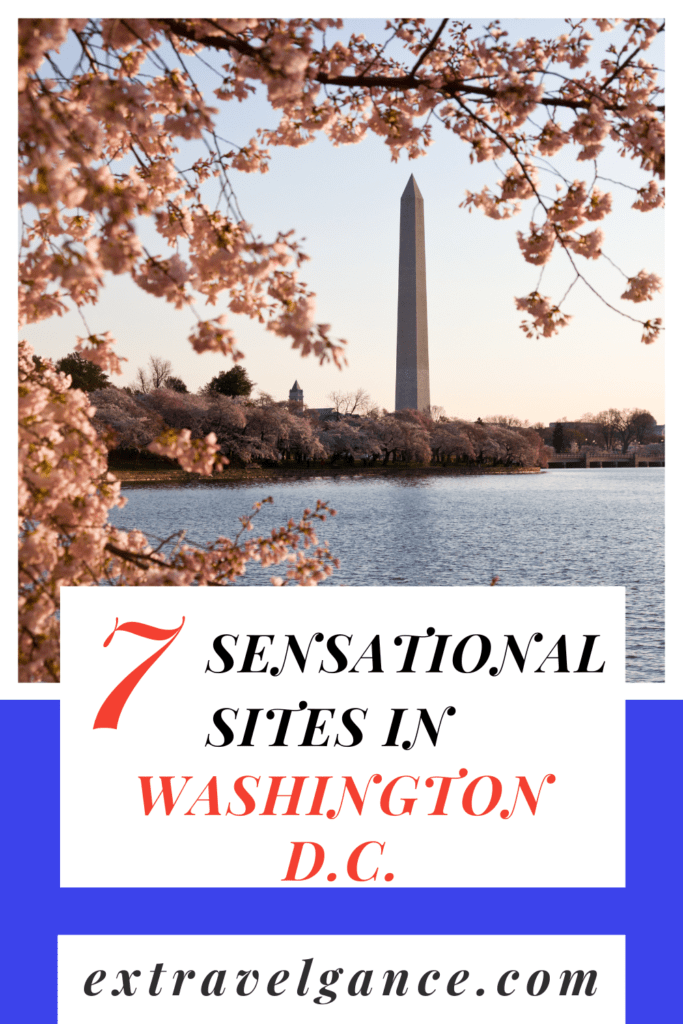
Washington D.C. offers a wealth of historical sites, cultural landmarks, and scenic spaces. There are tons of sites to see in our nations capital but here are our top 7 must-visit spots.
Note: We may earn a small commission from the affiliate links below.
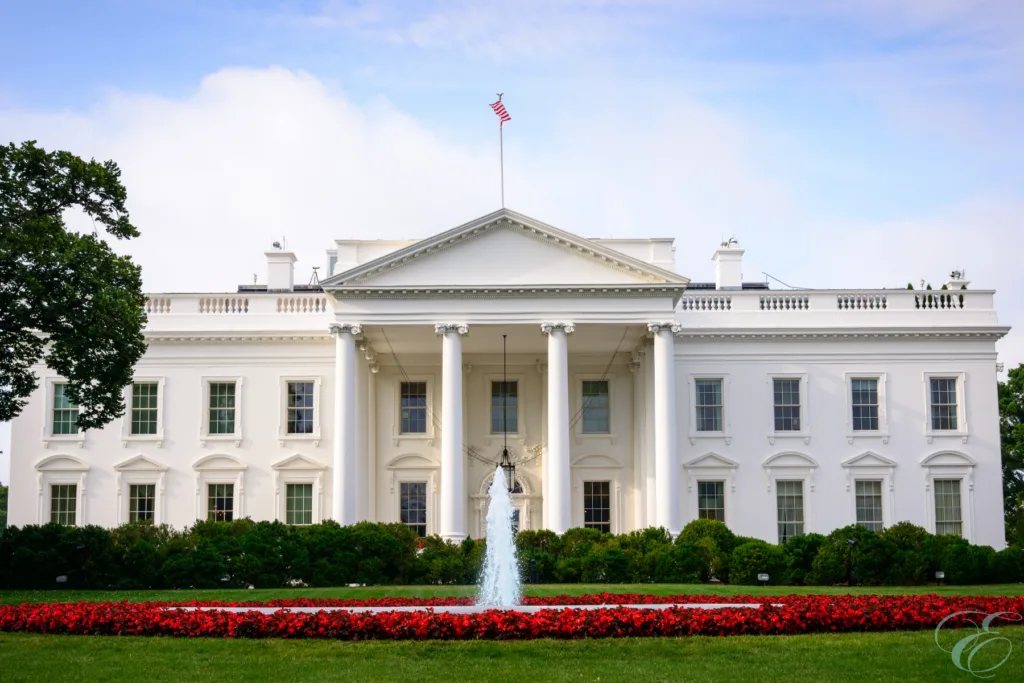
Tour the White House
When I think Washington D.C., I think of the seat of the U.S. government. And the leader of our nation sits in the White House. All politics aside, you should definitely take time to at least see the White House from the outside and to check out the White House Visitor Center.
If you can get a ticket to go inside, then GO! You must request a tour through your Member of Congress (U.S. citizens) or your embassy (foreign visitors). You have to request the tour between 21 to 90 days prior. There is no guarantee you will be approved, but the good news is if you land a spot, tours are free!
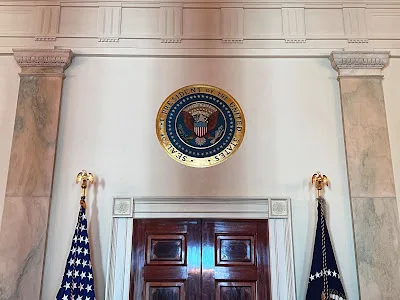
Steps to Schedule a Tour
- Contact your Member of Congress or embassy.
- Submit your request with the required details.
- Await confirmation with your tour date and time.
- Bring a valid government-issued ID on the day of your visit.
Tour Details
Tours are generally available Tuesday-Thursday 7:30 a.m.-11:30 a.m. and Friday-Saturday 7:30 a.m.-1:30 p.m. Be specific on what day you wish to visit when you make your request. You won’t know if you are approved or when you get to go until just before your trip. So, if you report that you are open to visit on any day, then you will find it difficult to schedule any other tours. Maybe just pick one or two days as options.
Security is tight – you can’t take a bag of any kind (including fanny packs or tiny purses) on the tour! If you have a baby with you, you can take a diaper bag with only necessary items. You can also take items needed for medical purposes. Photography is allowed only with a phone or small camera with lenses less than 3″ long.
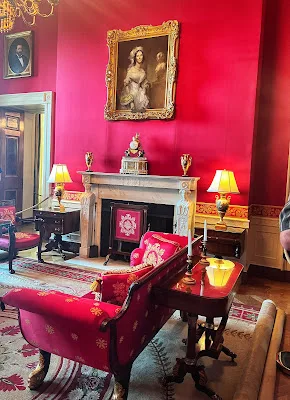
What You Will See
Your self-guided tour covers historic rooms on the State Floor and Ground Floor of the White House. Highlights include:
- East Room – The largest room, used for receptions, ceremonies, and press conferences.
- State Dining Room – Where official dinners are hosted.
- Blue Room – An oval-shaped room often used for receiving guests. Not to be confused with the oval office.
- Green Room & Red Room – Elegant spaces with historic furnishings.
- The China Room – Displays presidential china collections.
- You may see the Rose Garden and Jacqueline Kennedy Garden if you visit in the spring or fall.
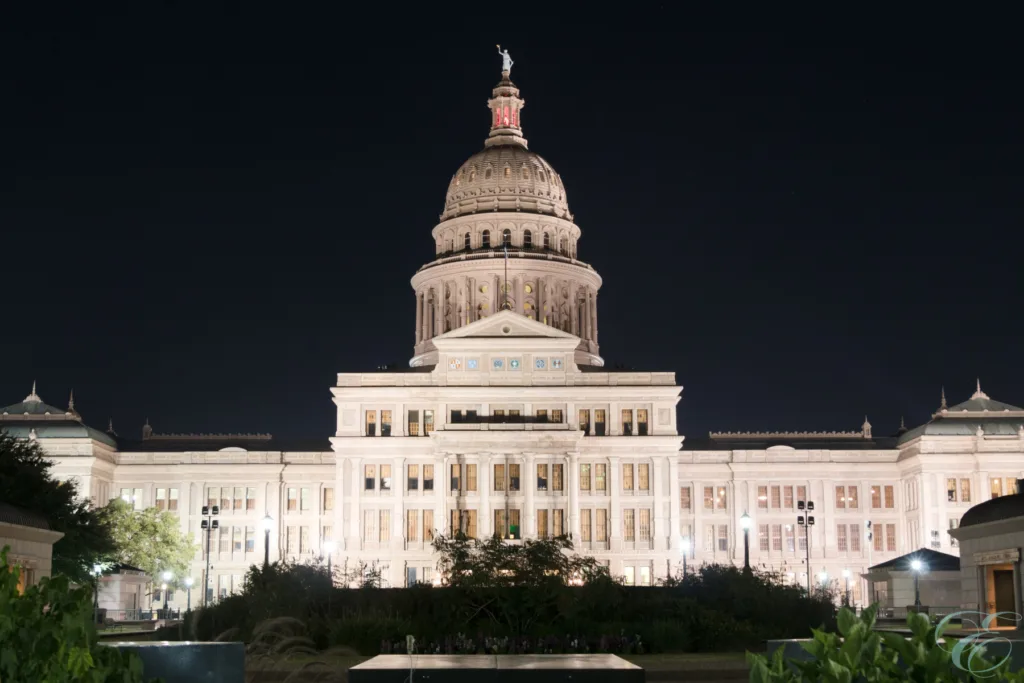
Check out Capitol Hill, Library of Congress, & Supreme Court,
Washington D.C. is home to the most iconic institutions in US Government. Make sure to visit the U.S. Capitol, the Library of Congress, and the Supreme Court. These landmarks offer a glimpse into American history, government, and law. Here’s how to make the most of your visit!
The Capitol
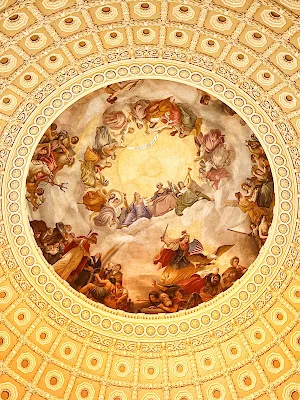
The U.S. Capitol is where Congress meets to debate and pass laws. Book a free guided tour through the Capitol Visitor Center website. If you want a more exclusive experience, book a tour with your Member of Congress. Walk-ins are welcome, but reservations guarantee entry. The tour includes:
- The Rotunda – Home to stunning frescoes and historical paintings.
- National Statuary Hall – Showcasing statues from all 50 states.
- The Crypt – A fascinating space beneath the Rotunda with exhibits on the Capitol’s history.
Want to see democracy in action? You can watch Congress in session by requesting a gallery pass from your Representative or Senator.
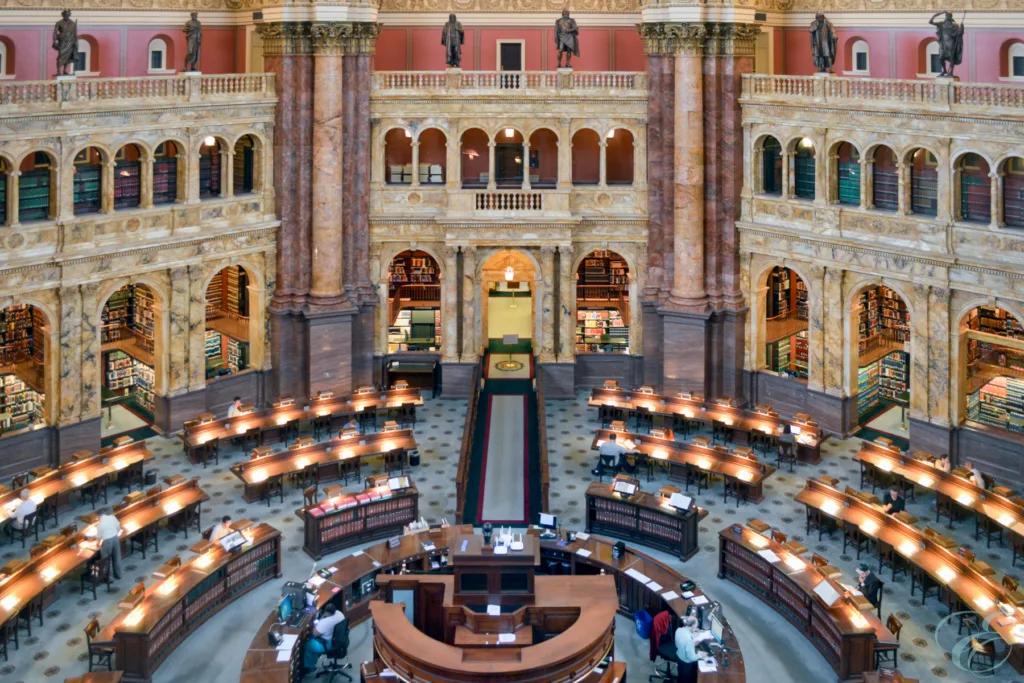
The Library of Congress
The Library of Congress is the world’s largest library, holding millions of books, manuscripts, and historical documents. It serves as the library and research services for the U.S. Congress. The Thomas Jefferson Building is open to visitors with free timed-entry passes available online. Must-see highlights include:
- The breathtaking Great Hall, with its intricate architecture and stained-glass skylights.
- The Gutenberg Bible, one of the oldest printed books in the world.
- The Main Reading Room, visible from an overlook, where scholars and researchers work.
Self-guided tours utilizing the library’s digital pathway can offer a deep look into the library’s collections and history.

The Supreme Court
The Supreme Court is where the country’s highest legal decisions are made. Tour the building and explore exhibits on the Court’s history and impact. Key experiences include:
- Attending a 30-minute courtroom lecture about the Supreme Court’s role and procedures.
- Viewing historic exhibits and portraits of Justices.
- Watching oral arguments on select days (seating is first-come, first-served or you may apply for a seat through the online lottery system).
Tips for a Smooth Visit to These Sites
- Arrive early to allow time for security screenings.
- Check schedules online, as hours and availability may change.
- Follow security guidelines—large bags, food, and drinks are not allowed in most government buildings.
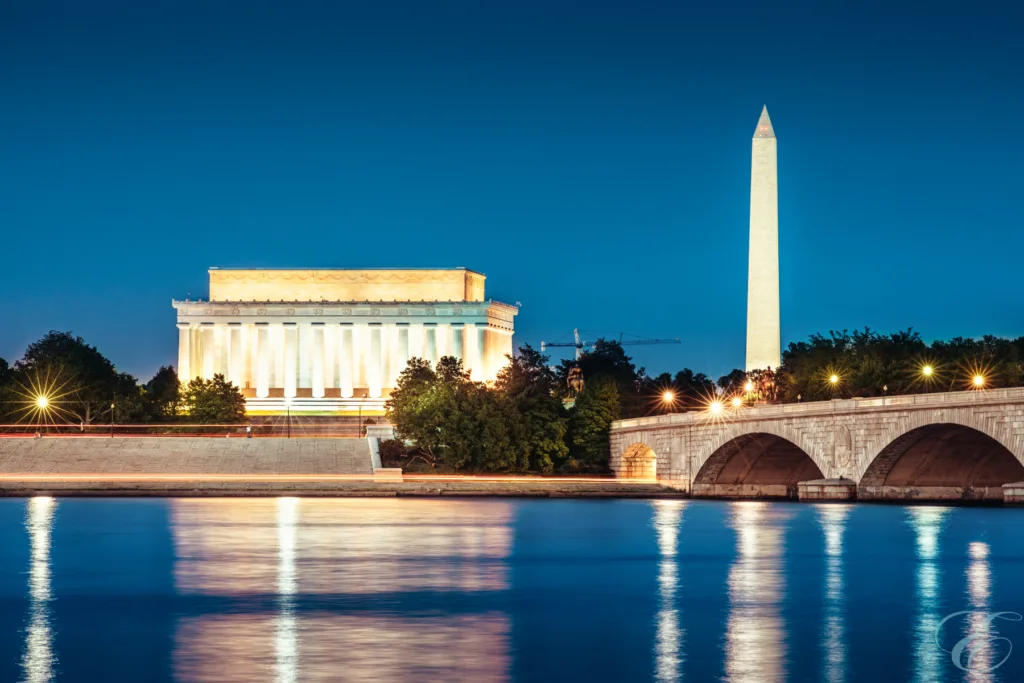
Tour the Monuments
Washington D.C. is home to some of the most iconic monuments in the United States. These historic landmarks honor great leaders, pivotal events, and the nation’s rich history. Be sure to check out these favorites!
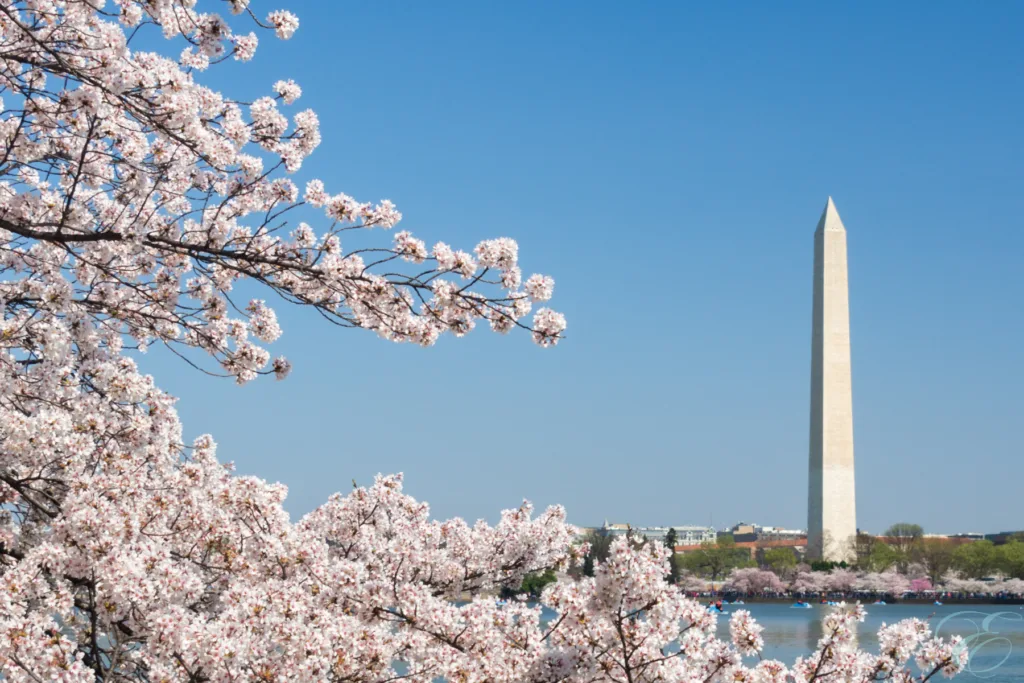
Washington Monument
One of the most recognizable structures in the city, the Washington Monument soars over 550 feet into the sky. As the name suggests, it was built to commemorate George Washington, the first President of the United States. Secure free tickets to ride the elevator to the top and enjoy a stunning panoramic view of the city. The surrounding Reflecting Pool adds to its grandeur.
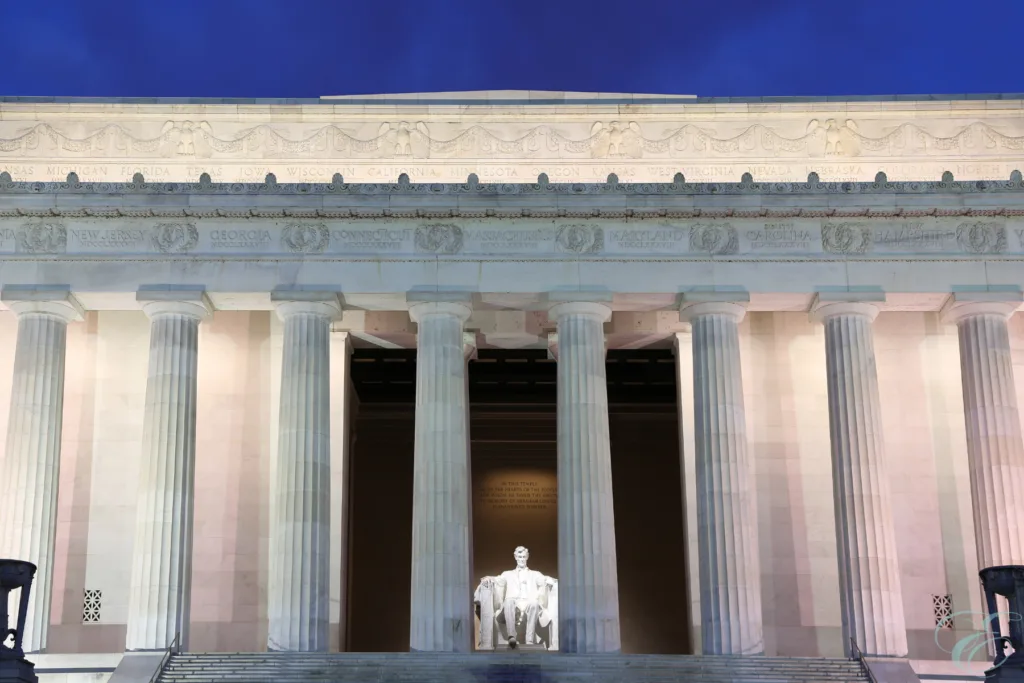
Lincoln Memorial
Standing as a tribute to the 16th President of the United States, the Lincoln Memorial is a must-see. Climb the steps to see the larger-than-life statue of Abraham Lincoln and read his powerful Gettysburg Address inscribed on the walls. Visit at night for a breathtaking illuminated view.

Jefferson Memorial
Located along the Tidal Basin, the Jefferson Memorial honors Thomas Jefferson, the principal author of the Declaration of Independence. The domed structure offers incredible views, especially during the cherry blossom season in spring.
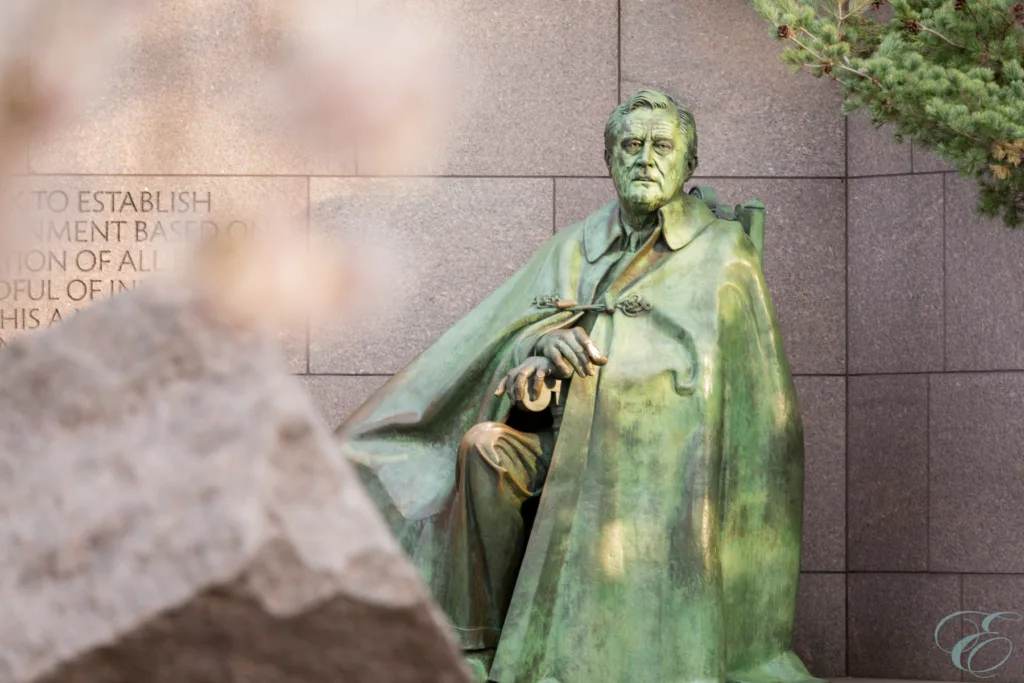
Franklin Delano Roosevelt Memorial
Spanning over seven acres, the FDR Memorial highlights the four terms of President Roosevelt’s leadership through a series of outdoor rooms, statues, and waterfalls. It provides a contemplative look at his presidency and the challenges of the Great Depression and World War II.
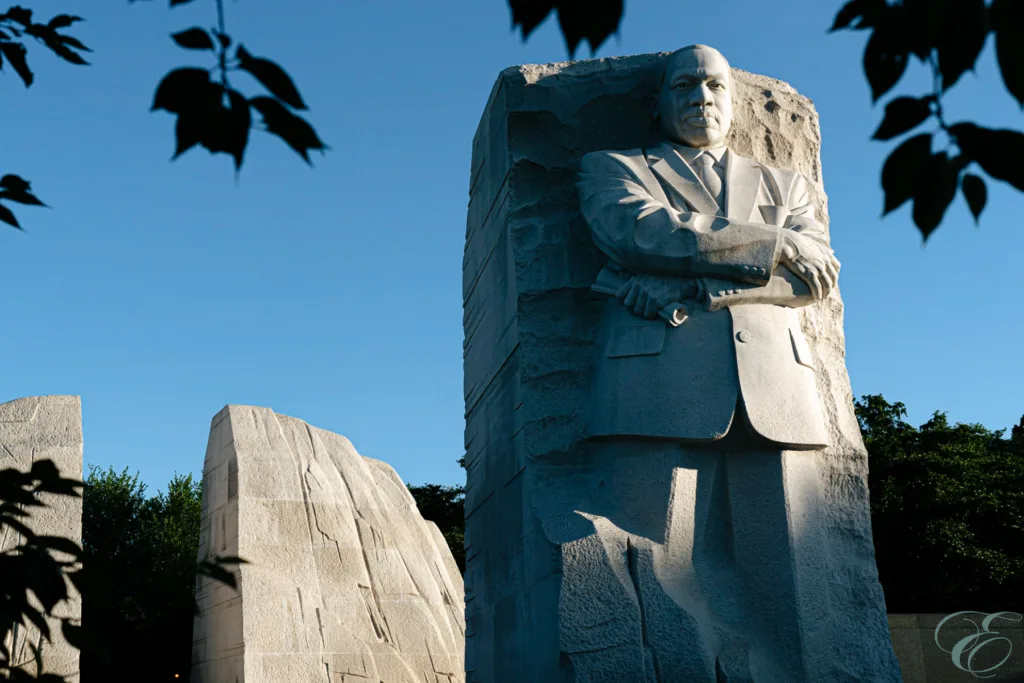
Martin Luther King, Jr. Memorial
A powerful tribute to the civil rights leader, the Martin Luther King, Jr. Memorial features a striking 30-foot statue of Dr. King emerging from stone. Walk through the surrounding inscriptions of his most famous speeches, which continue to inspire justice and equality.

World War I Memorial
The World War I Memorial honors the 4.7 million Americans who served their nation in the Great War. It includes a memorial to General John J. Pershing, commander of the American Expeditionary Forces and a Peace Fountain with an excerpt from the poem “The Young Dead Soldiers Do Not Speak.” The central feature is a sculpture titled A Soldiers Journey. A walk through this memorial is a moving reminder of the shock and loss of war.
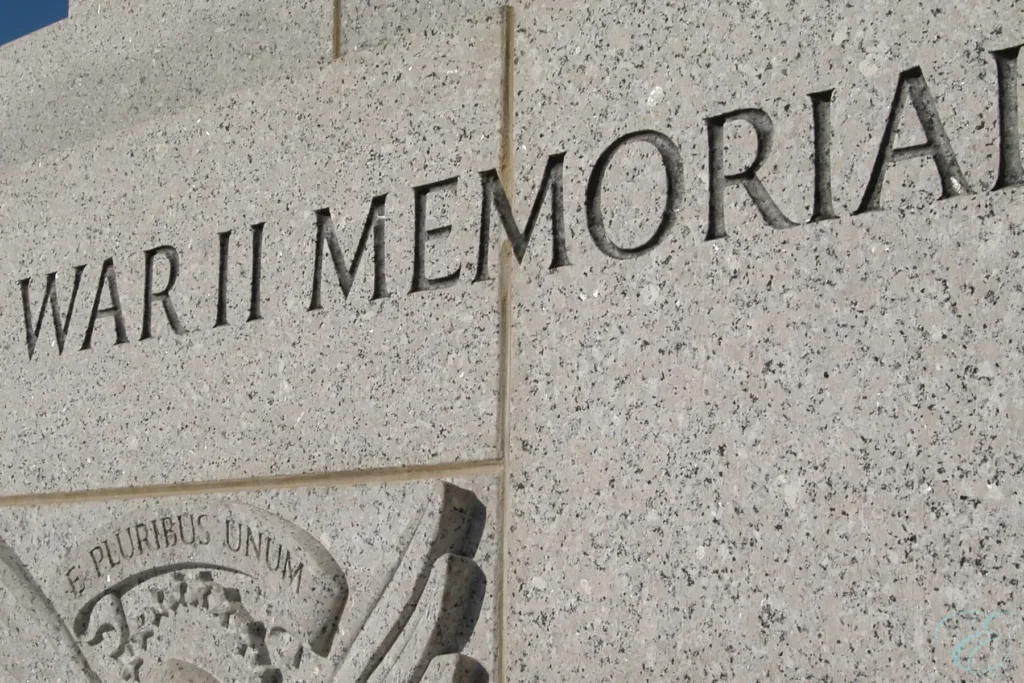
World War II Memorial
Situated between the Washington Monument and Lincoln Memorial, the World War II Memorial pays tribute to the 16 million Americans who served in the war. The grand fountains, pillars, and Freedom Wall with gold stars create a solemn and moving experience.
Vietnam Veterans Memorial
The Vietnam Veterans Memorial, commonly known as “The Wall,” lists the names of over 58,000 fallen or missing soldiers from the Vietnam War. Visitors often leave flowers and tributes in memory of their loved ones.
Korean War Veterans Memorial
The Korean War Veterans Memorial features 19 life-sized statues of soldiers walking through a rugged landscape, symbolizing the difficult conditions they faced. The etched Wall of Remembrance lists the names of those who served.
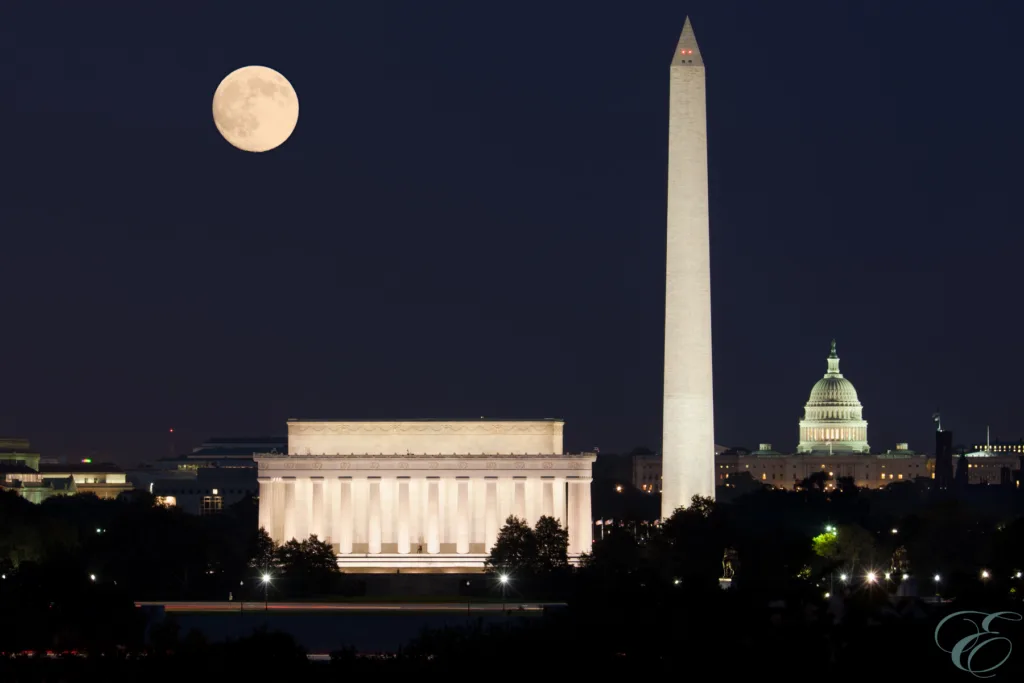
How to Tour the Monuments of Washington D. C.
There are several options for visiting the monuments. You can certainly hoof it on foot, but your feet may hate you by the end of the day. Washington D.C. is nothing if not a place to get your steps in.
You can also see the monuments from the Hop-On Hop-Off Trolly or by Electric Cart. These options are great as they also include a lot of other areas. Better yet a Monuments By Night Bus Tour or I really like this Washington DC by Night Electric Cart Tour. If you are ok viewing the monuments from a distance, you might prefer a Moonlight Cruise. It is wonderful to see this beautiful city lit up while relaxing on a cruise on the Potomac. There are even options that include dinner with the cruise.
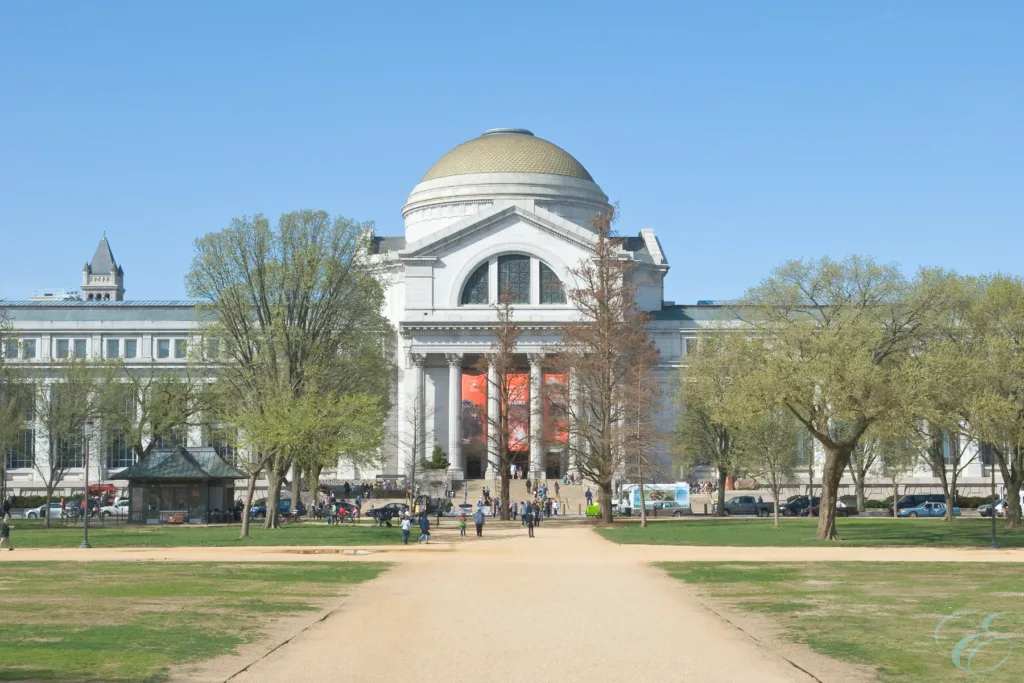
Check Out the Museums
You will find some of the most fabulous museums in the nation in Washington D.C.. Not only is it home to the Smithsonian institution, but there are dozens of private museums to educate and entertain your mind.
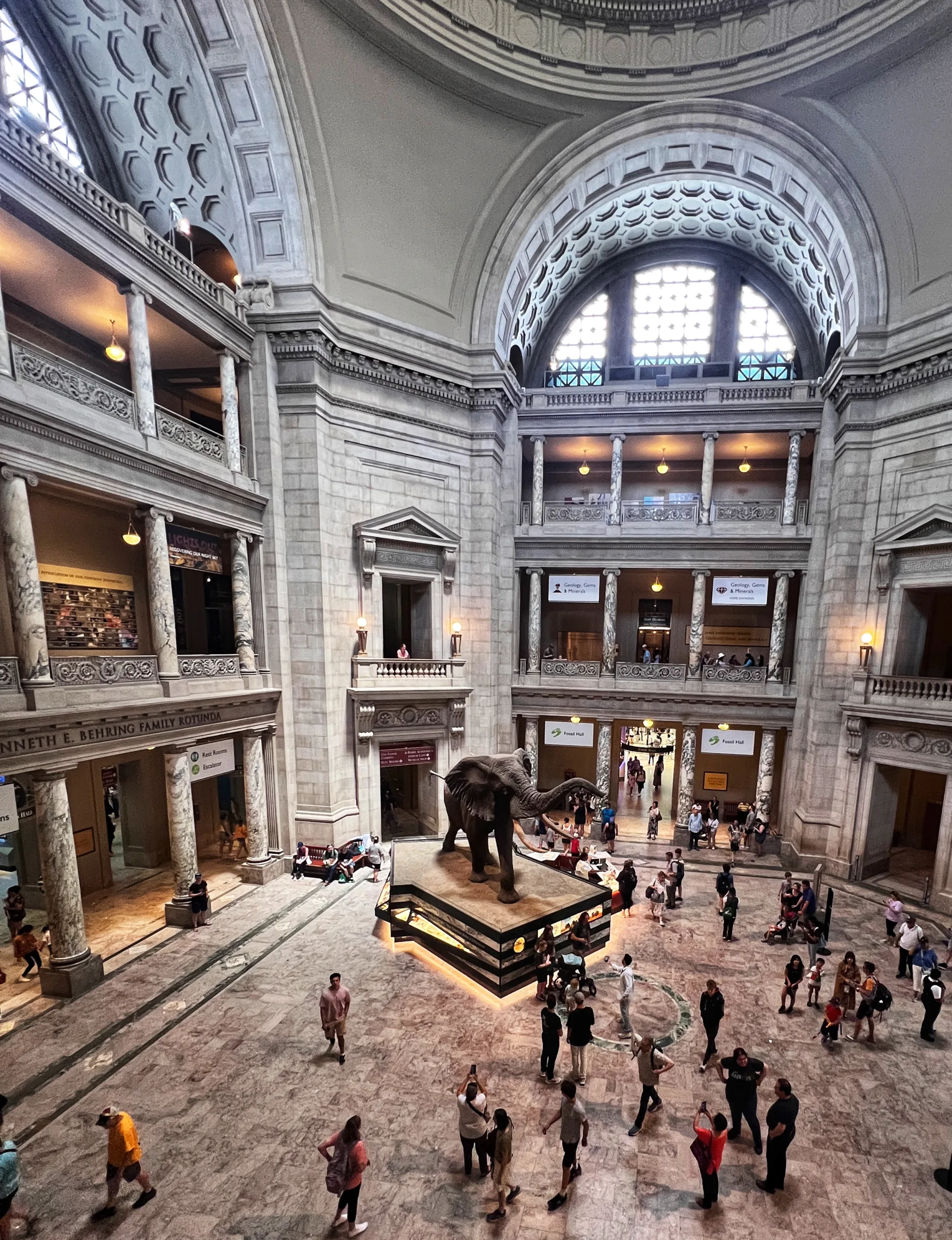
The Smithsonian Institution
The Smithsonian Institution is the world’s largest museum complex. You can explore everything from natural history and space exploration to art and American culture. Best of all, admission is free! Also, they are open every day except December 25. Here are some of the must-visit Smithsonian Museums.
- Smithsonian Institution Building (The Castle) – Start at the Smithsonian Castle, which offers an overview of all the museums and their highlights.
- National Museum of Natural History – Home to the famous Hope Diamond, massive dinosaur skeletons, and immersive exhibits, this is a favorite for families and science lovers.
- National Air and Space Museum – Discover historic aircraft, space artifacts, and the Apollo 11 Command Module in this fascinating museum. You need to reserve a free entry pass for this museum.
- National Museum of American History – See the Star-Spangled Banner, Abraham Lincoln’s hat, Dorothy’s ruby red slippers, Barbie, and exhibits on American innovation, culture, and politics.
- Smithsonian American Art Museum – Explore one of the largest collections of American art, featuring works from colonial times to contemporary masterpieces.
- Renwick Gallery – A branch of the Smithsonian American Art Museum dedicated to contemporary craft.
- National Museum of African American History and Culture – A powerful museum showcasing African American history, culture, and contributions to the nation, including Harriet Tubman’s shawl and Chuck Berry’s Cadillac. You need to reserve a free entry pass for this museum.
- National Museum of the American Indian – Experience the rich cultures and histories of Native American tribes through stunning exhibits, artifacts, and interactive displays.
- Hirshhorn Museum and Sculpture Garden – Admire cutting-edge contemporary art and striking outdoor sculptures in this modern art museum.
- National Portrait Gallery – View iconic portraits of U.S. Presidents and other influential figures in American history.

Other Smithsonian Museums& Galleries in Washington D.C.
- Anacostia Community Museum – Focused on urban communities and social issues.
- Arts and Industries Building – One of the oldest Smithsonian museums, occasionally hosting special exhibitions.
- National Museum of African Art – Features African art collections.
- S. Dillon Ripley Center – Houses the Smithsonian Associates and the Discovery Center.
- Archives of American Art Lawrence A. Fleishman Gallery – The world’s largest resource dedicated to preserving the papers and primary records of visual arts in America.
- National Postal Museum – History of mail, postage, and stamp collecting.
- National Zoo – Home to giant pandas and a diverse collection of wildlife. You need to reserve a free entry pass to visit the zoo.
- National Museum of Asian Art – Art and culture from Asia and the Middle East. Includes the Freer Gallery of Art and the Arthur M. Sackler Gallery.
- Smithsonian Gardens – Living museum of gardens across Smithsonian properties.
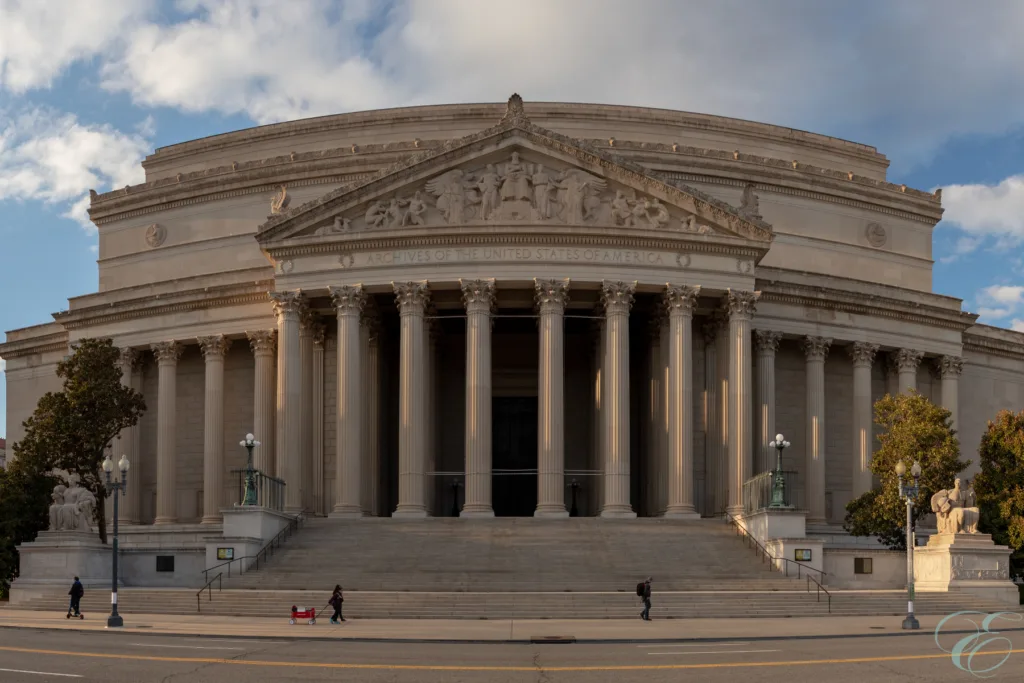
Other Great Museums in Washington D.C.
While the Smithsonian museums are a major attraction, Washington D.C. is also home to other incredible museums worth visiting.
- The National Archives Museum – Home to America’s founding documents, including the Declaration of Independence, Constitution, and Bill of Rights. It’s a powerful reminder of the nation’s history and values.
- The National Gallery of Art – One of the world’s premier art collections, featuring works from Leonardo da Vinci to Jackson Pollock.
- The United States Holocaust Memorial Museum – A deeply moving museum dedicated to the history and remembrance of the Holocaust.
- The International Spy Museum – A fascinating look into the world of espionage, intelligence, and secret operations.
- The Phillips Collection – America’s first museum of modern art, featuring works by Renoir, Rothko, and O’Keeffe.
- The Museum of the Bible – An interactive exploration of the Bible’s history, impact, and influence. This museum has a quirky immersive experience, Washington Revelations, where you can virtually “fly over” D.C. and spot the biblical references hidden in the city’s architecture and landmarks.
- The National Building Museum – Focused on architecture, design, and urban planning with engaging exhibits and events.
- National Bonsai & Penjing Museum – Located in the National Arboretum, this museum houses some of the oldest and most meticulously groomed bonsai trees in the country, with some specimens over 400 years old.

The Assassination of Lincoln
Washington, D.C., holds a somber place in American history as the site of President Abraham Lincoln’s assassination. If you’re interested in retracing the events of that fateful night, visit these historic locations where the tragedy unfolded.
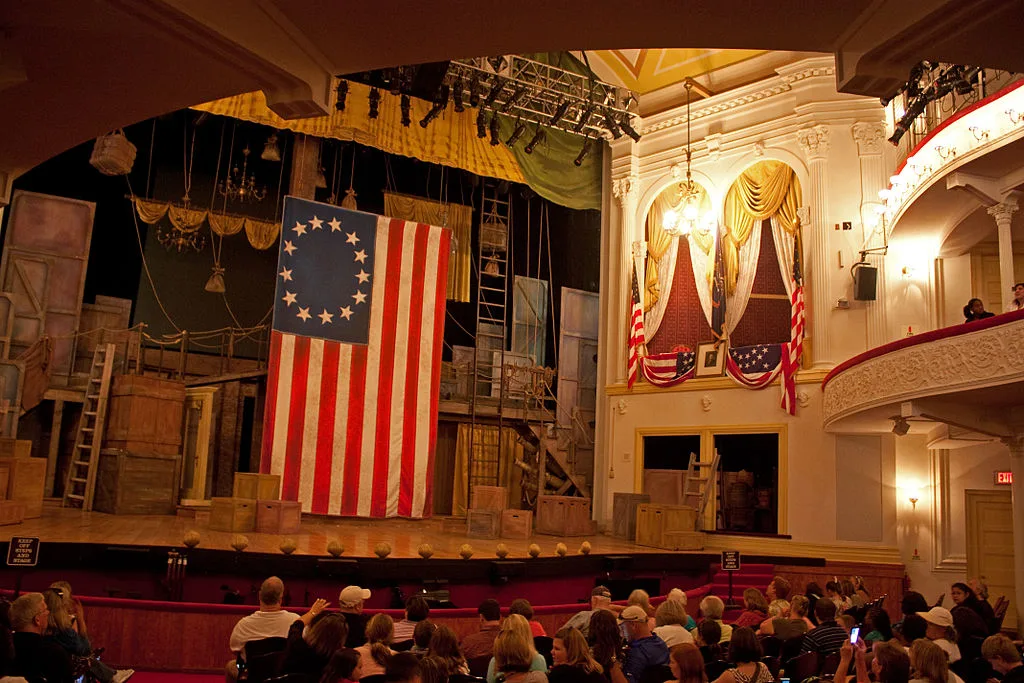
Wknight94 talk, CC BY-SA 3.0 https://creativecommons.org/licenses/by-sa/3.0, via Wikimedia Commons
Ford’s Theatre
Start your journey at Ford’s Theatre, where actor John Wilkes Booth assassinated President Lincoln on April 14, 1865. Today, the theater operates as a museum and working playhouse. Book a guided tour or ranger-led tour to see exhibits on Lincoln’s presidency, Booth’s plot, and Civil War-era Washington. Stand in the President’s Box and witness the very stage where history changed forever. Then learn about the hunt for Booth, follow the funeral train, and witness a nation in mourning through the Aftermath Exhibits.
Book tickets for Ford’s Theatre in advance, as tours fill up quickly and arrive early to allow time for security screenings.

National Park Service Digital Image Archives, Public domain, via Wikimedia Commons
Petersen House
Just across the street from Ford’s Theatre, visit the Petersen House, where Lincoln was carried after the shooting. Here, he took his final breaths the following morning. Walk through the preserved rooms, including the small bedroom where Lincoln passed away. The site now connects to the Center for Education and Leadership, which delves into Lincoln’s legacy and the aftermath of his assassination.
Surratt Boarding House
Head to Mary Surratt’s boarding house, located in Chinatown. This unassuming building once served as a meeting place for Booth and his co-conspirators. While it now operates as a restaurant, its exterior remains largely unchanged. Stop by to glimpse the site where conspirators finalized their deadly plans.
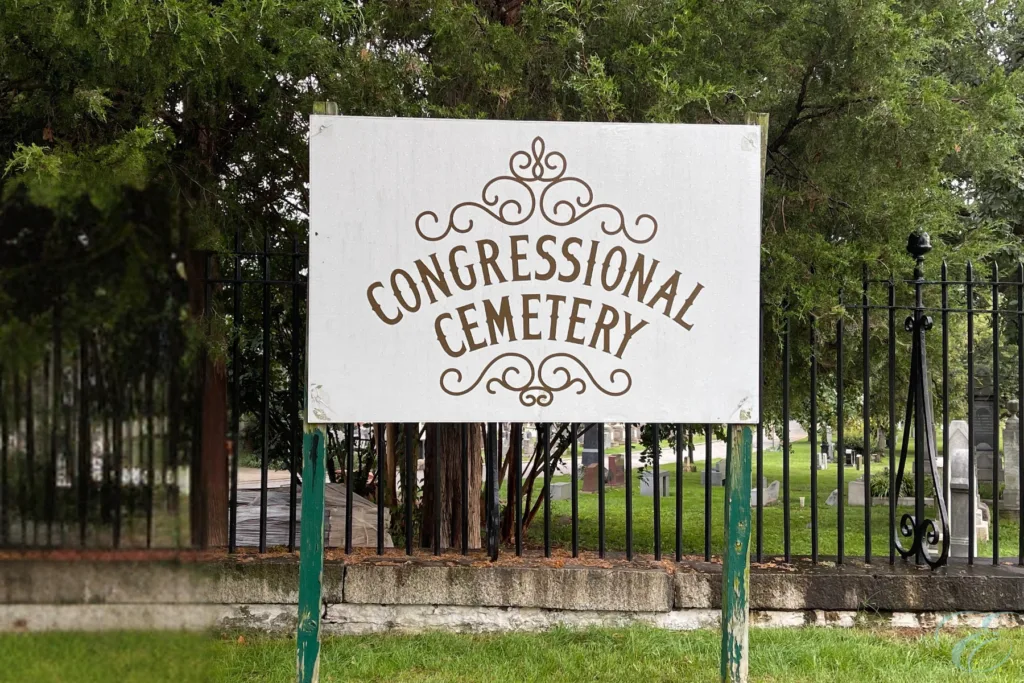
Congressional Cemetery
If you want to see the final resting places of key figures involved in the assassination, visit Congressional Cemetery. Here, you’ll find the graves of several conspirators, including David Herold and Mary Surratt. Check out this self-guided tour that details their stories and the broader history of Civil War-era D.C.
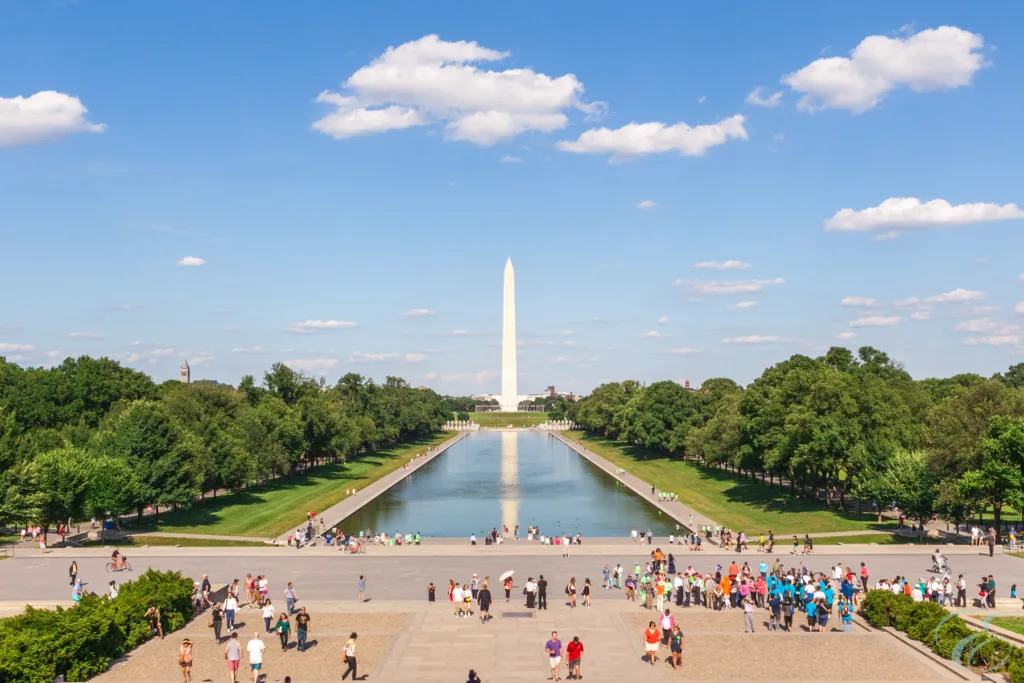
Washington D. C. Parks & Green Spaces
Washington D.C. is more than just historic monuments and political landmarks. The city is also home to stunning parks and green spaces that offer a peaceful escape from the hustle and bustle. Whether you’re looking for a place to hike, picnic, or simply relax, these outdoor spaces provide the perfect setting. Exploring Washington, D.C.’s parks and green spaces offers a refreshing break from the city’s political scene.
National Mall
Often called “America’s front yard,” the National Mall is a long, beautiful park stretching from the Capitol Building to the Lincoln Memorial. The National Mall’s sprawling green space is ideal for leisurely strolls, outdoor activities, and picnicking. The National Mall includes over a dozen units of the National Park System and more than 100 unique memorials and monuments.
Walk among the cherry blossoms in the spring or relax by the Reflecting Pool. The Mall is also a prime location for festivals, outdoor concerts, and historical reenactments.

Rock Creek Park
One of the largest urban parks in the country, Rock Creek Park spans over 1,700 acres of woodlands, trails, and scenic spots. Hike along its winding paths, bike on the many paved roads and trails, or enjoy 13 miles of dirt and bridle paths on horesback. Visit the Nature Center and Planetarium, the Old Stone House Visitor Center, or explore Pierce Mill Visitor Center, a historic 19th-century gristmill. The park also offers plenty of picnic areas.
Check out the many Civil War Sites in the park. The park was deforested during the war and the log and branches were laid out to create barriers and fortifications to halt the Confederate Army. Fort Stevens was built to defend the approach to Washington. On July 12, 1864, President Lincoln stood on the parapet to watch the battle and the Confederate sharpshooters took aim. As a result, he is the only American President to come under direct fire from an enemy combatant. Fortunately someone told him to “get down,” or the war may have ended quite differently.
Meridian Hill Park
If you enjoy landscaped gardens and historic fountains, Meridian Hill Park, located in Rock Creek Park, is a must-visit. It was named Meridian Hill because it was on the original longitude of the original District of Columbia milestone marker placed in 1791. It is now part of Rock Creek Park.
This European-style park features a beautiful 13-basin cascading fountain and a tranquil reflecting pool and fountains. It also features several beautiful sculptures including the James Buchanan Memorial, Noyes Armillary Sphere, Dante, Joan of Arc, and Serenity. Located just north of the White House, it’s a peaceful retreat with a rich cultural history.

U.S. National Arboretum
For a quieter escape, visit the U.S. National Arboretum, a 446-acre botanical research facility with stunning gardens and scenic walking trails. Marvel at the iconic Capitol Columns, explore the Bonsai and Penjing Museum, or stroll through the beautiful azalea collections. The Arboretum is a haven for plant lovers and photography enthusiasts alike.
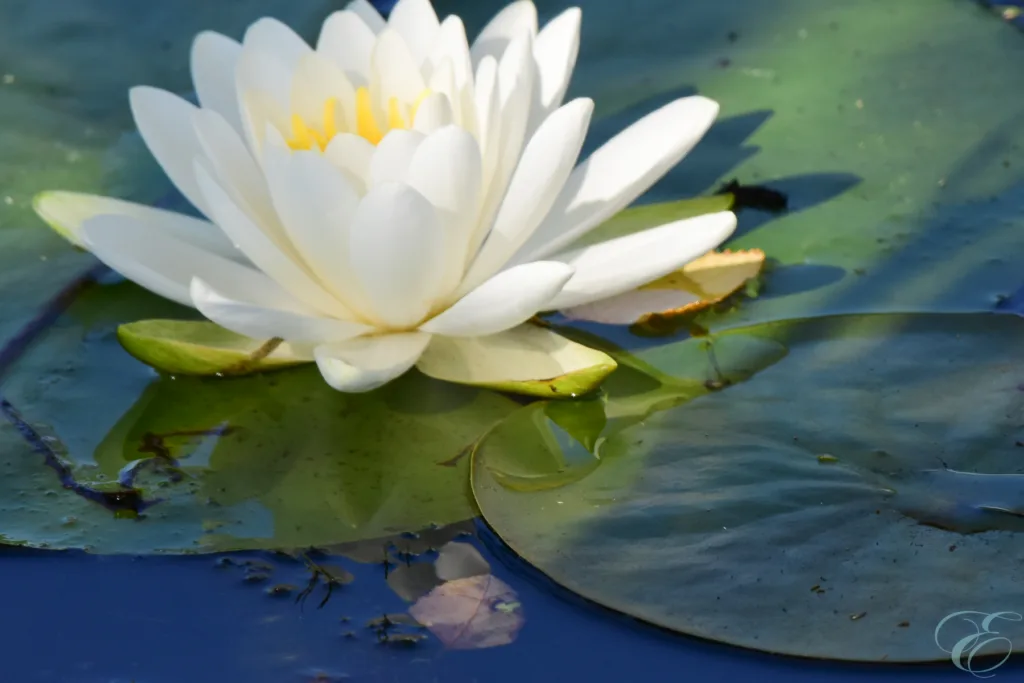
Kenilworth Aquatic Gardens
For a truly unique experience, explore Kenilworth Aquatic Gardens, home to stunning water lilies, lotuses, and wetlands. This hidden treasure offers boardwalk trails, birdwatching opportunities, and breathtaking views of blooming flowers in the summer months.
Theodore Roosevelt Island
Nestled in the Potomac River, Theodore Roosevelt Island is a hidden gem dedicated to the conservationist president. The island offers serene hiking trails, a memorial plaza, and abundant wildlife. Cross the footbridge from Arlington, Virginia, and immerse yourself in nature just minutes from downtown D.C.

Quirky Washington D.C.
Washington, D.C., may be known for its grandeur and historical significance, but it also has a quirky side! Here are some of the fun and quirky things to see and do in the capital.
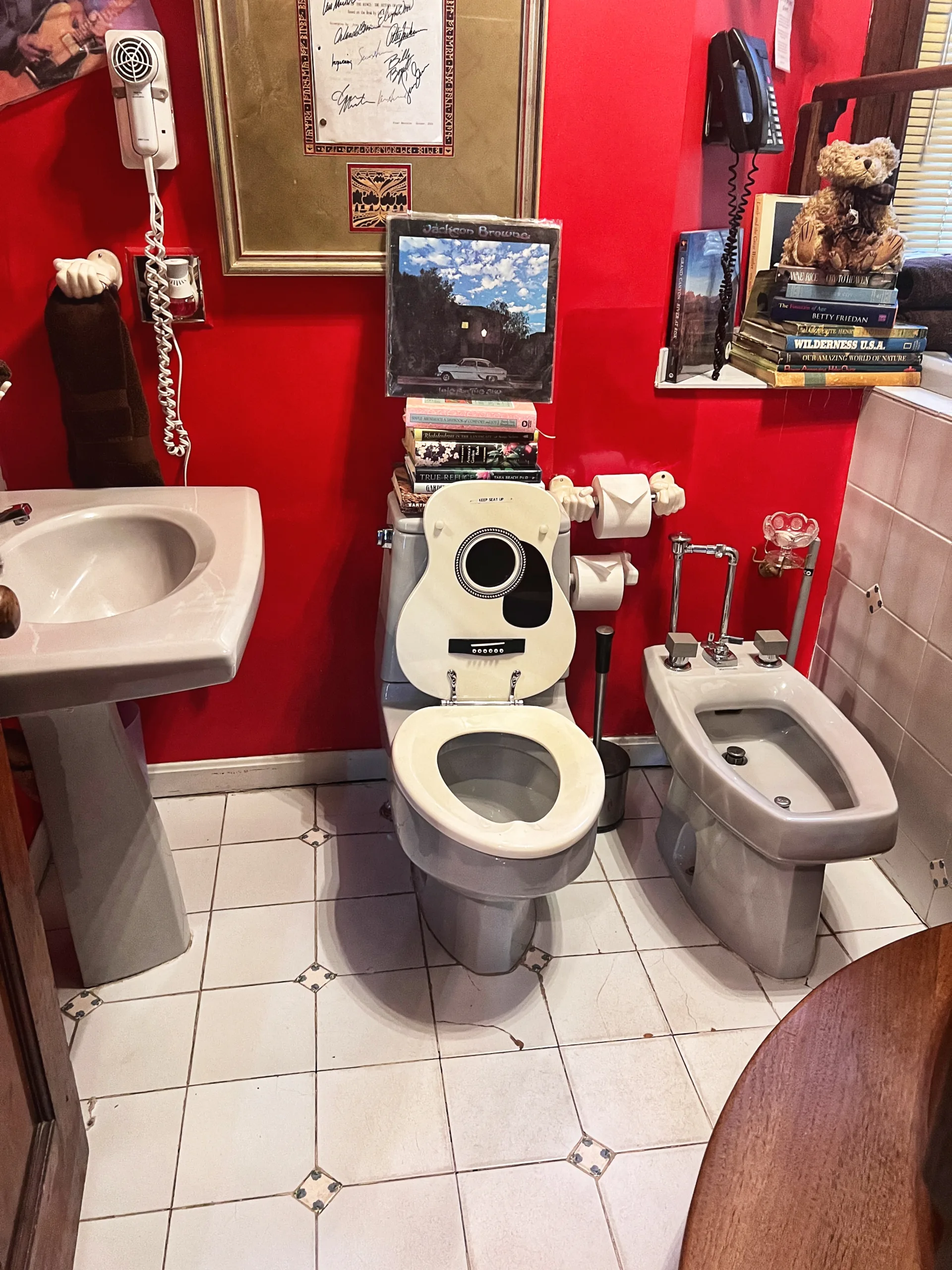
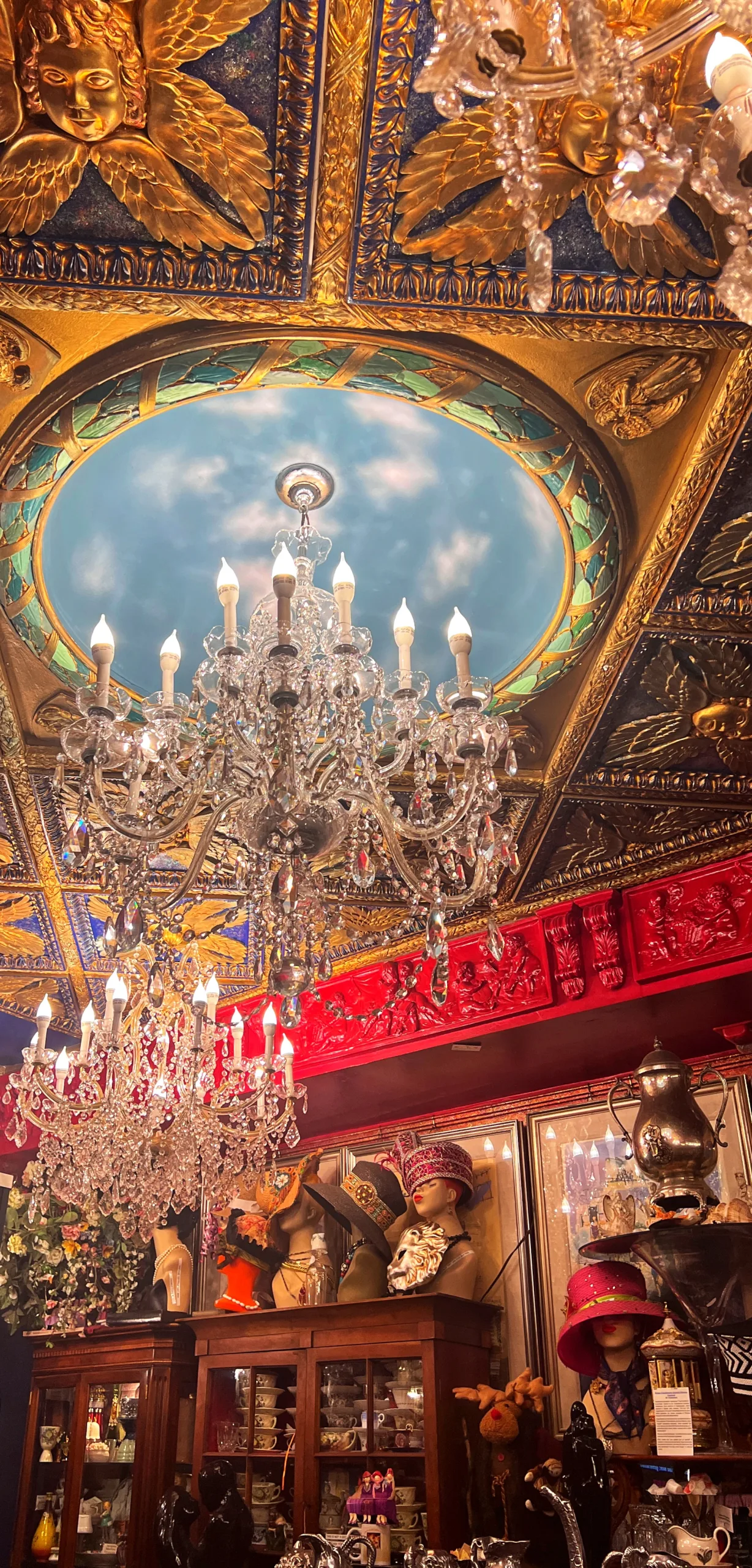
O Street Mansion
While technically a museum, the O Street Mansion is known for its eclectic decor and hidden doors (over 70 of them!). Each room is themed and filled from top to bottom with antiques, art, weird artifacts. And this is likely the only museum in the entire world where you can buy each and very item inside!
The mansion is actually series of Georgetown houses joined together. It’s sectioned off into bedrooms, bathrooms, and little kitchens which can be rented as a hotel. But when a suite isn’t being used, it’s open for people who purchase tickets to the museum to walk through.
Best of all, there are lots of secret doors throughout the mansion – miss one, and you will miss an entire exhibit. It is fun walking through and finding the doors. There are also tiny “Tinkerbell” doors where you will find Tinkerbell objects. It is a bit bizarre but fun. You should really consider one of the guided tours to make the most of your time here or you can get a little lost on the self-guided tour!
Fun fact about this place! Rosa Parks lived the last few decades of her life in this mansion.
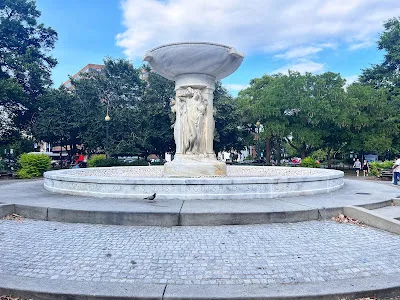
Dupont Underground
Once an abandoned trolley tunnel beneath Dupont Circle, the Dupont Underground is now an arts space used for exhibits, pop-ups, and other cultural events. It’s a fascinating blend of history and modern creativity.
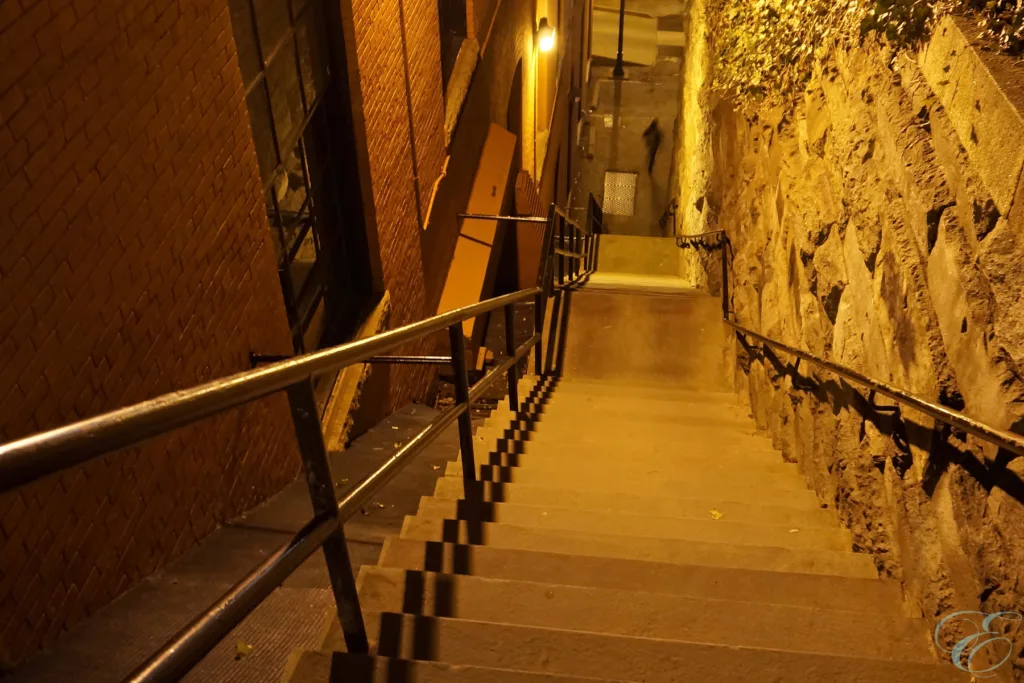
Exorcist Steps
Fans of horror films will recognize these steep, eerie steps in Georgetown from the iconic 1973 movie The Exorcist. Located at the intersection of Prospect Street and 36th Street, these steps are a favorite for horror movie enthusiasts and daring fitness fans alike. Also check out the Exorcist House located just down the street. Most guided Ghost Tours will take you to see these places.
Culture House: formerly known as The Blind Whino Arts Club
Culture House is a premier destination for the arts. This former church turned colorful arts space in southwest D.C. is painted in vibrant colors and serves as a creative venue for exhibits, performances, and events. The building’s exterior alone is worth a visit for the dazzling street art. But take a peak inside if you get a chance. The interior will overwhelm you!
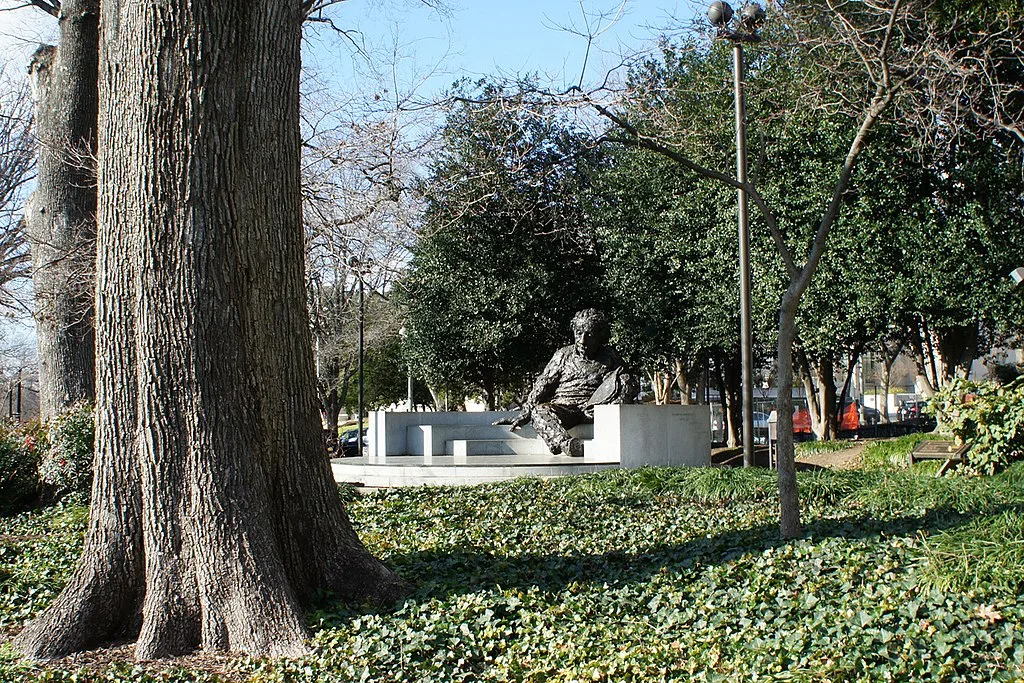
Mariordo (Mario Roberto Durán Ortiz), Public domain, via Wikimedia Commons
Albert Einstein Memorial
This larger-than-life statue of Einstein sits on a bench near the National Academy of Sciences. Visitors love to climb up on his lap for photos or rub his nose for good luck.
The Big Chair
Once the world’s largest chair, this 19.5-foot-tall landmark is a quirky part of D.C.’s history. Originally built in 1959, it remains a beloved community symbol and an amusing photo op in the Anacostia neighborhood of the city.
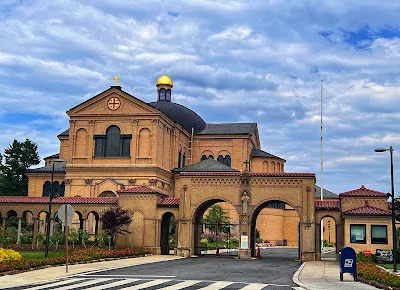
Franciscan Monastery of the Holy Lands
This interesting monastery holds replicas of what places in the Holy Land look like today. If you haven’t visited Israel, it might be worth a look. The reason the monastery makes the quirky list is due to its catacombs. It may seem a little sick to some, but the fact is, Deidra and I love dead people. We like to visit catacombs, see mummies, and tour churches decorated with the bones of victims from the black plague. But since some people think that is weird, I generally place these sites on the quirky list.
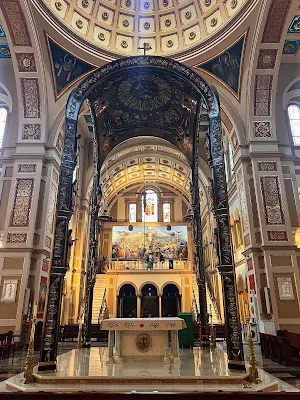
There is only one body in the monastery catacombs. It is that of a child they found in the Roman Catacombs and made a saint (Saint Innocent). The catacombs include enchanting drawings on the wall and an extensive garden for exploration. Take a guided tour and then enjoy the tranquility of the monastery on your own. You can even book a personal retreat in the hermitage.
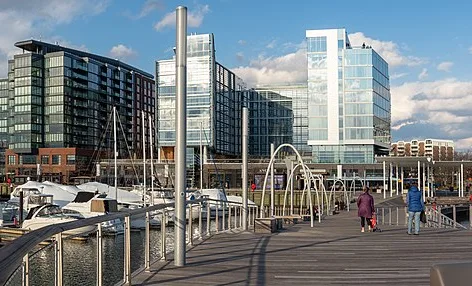
Rhododendrites, CC BY-SA 4.0, via Wikimedia Commons
Swings On The Wharf
These aren’t really quirky, but they are fun. Check out the swings on the wharf at Recreation Pier. They offer great views of the Washington Channel and are a wonderful place to relax and watch the sun set.
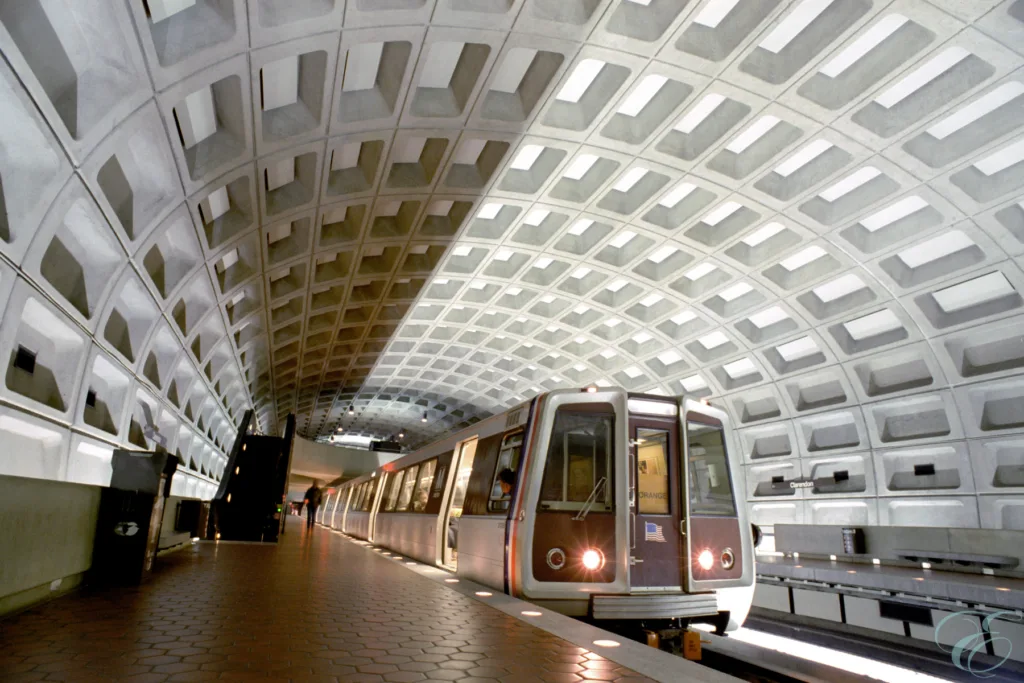
Planning A Visit To Washington D.C.
There are several great places to stay in Washington D.C. There are also great places to grab a bite to eat. Check out the historic Old Ebbitt Grill. Established in 1856, it is a popular place for politicians to gather. You might also try the trendy Union Market Food Hall. It is a hotspot for local flavors, unique shopping, and artisanal treats.
It is amazingly easy to get around Washington D.C. on the Metro! Between a Metro ticket and your feet, you will rarely, if ever, need other transportation.

What Sites Do You Most Enjoy in Washington D.C.?
These are just 7 of the sensational sites to see in Washington D.C. But D.C. is full of many more incredible sites that are worth exploring. Tell us below where you plan to visit!
We hope you have enjoyed this installment on our 7 Sensational Sites in Each State of the USA series. Tell us what you think in the comments below. You can also contact us and follow us on Facebook, Instagram and Pinterest so you never miss a post.


